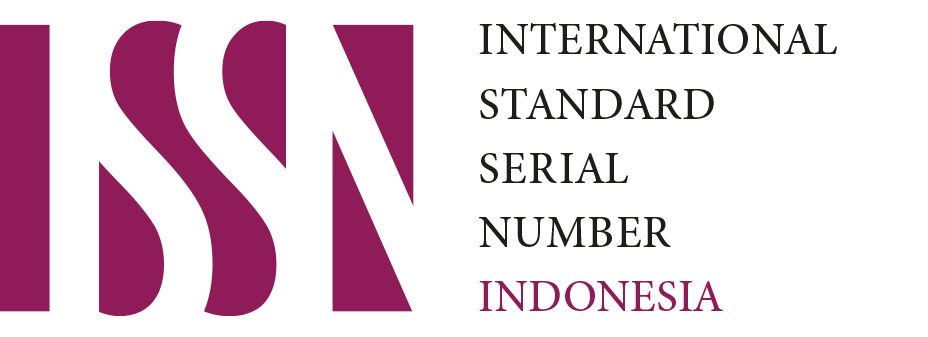YouTube's Implementation As an Alternative Media for Information Literacy Learning for Students at Pelita Harapan University
Downloads
Background of the study:the use of the YouTube platform as a medium for learning information literacy in students.
Purpose:to find out the implementation and use of the YouTube platform as a learning medium to help students understand information literacy.
Method:Using a qualitative descriptive method with the analysis of the Miles and Huberman model approach, namely data reduction, data presentation and conclusion drawing.
Findings:Using YouTube as an information literacy learning media helps students understand information literacy material, this can be seen from the average access to information literacy material above 5000 times.
Conclusion: YouTube can be used as a medium for learning information literacy even though it is a supplement or supplement.
Downloads
Burke, S. C., & Snyder, S. L. (2008). YouTube : An Innovative Learning Resource for College Health Education Courses An Overview of YouTube Using YouTube in Higher Education. International Electronic Journal of Health Education, 11, 39–46. Retrieved from http://eric.ed.gov/?id=EJ798652
Clifton, A., & Mann, C. (2011). can youtube enhance student nurse learning? Nurse Education Today, 31, 311–313.
Duffy, P. (2008). Engaging the YouTube google-eyed generation: strategies for using web 2.0 in teaching and learning. The Electronic Journal of E-Learning, 6(2), 119–130.
Fralinger, B., & Owens, R. (2009). You Tube As A Learning Tool. Journal of College Teaching & Learning (TLC), 6(8), 15–28. https://doi.org/10.19030/tlc.v6i8.1110
Garrett-Wright, D. M., & Abell, C. H. (2011). Using youtube to bridge the gap between baby boomers and millennials. Journal of Nursing Education, 50(5), 299–300.
Hootsuite. (2019). Digital 2019: Indonesia. Global Digital Insights, 77. https://doi.org/https://datareportal.com/reports/digital-2019-indonesia
Moran, M., Seaman, J., & Tinti-Kane, H. (2011). Teaching, learning and sharing: how today's higher education faculty use social media.
Raiyn, J. (2016). The Role of Visual Learning in Improving Students' High-Order Thinking Skills. Journal of Education and Practice, 7(24), 115–121. Retrieved from http://files.eric.ed.gov/fulltext/EJ1112894.pdf
Roodt, S., & Peier, D. (2013). Using Youtube© in the Classroom for the Net Generation of Students. Issues in Informing Science and Information Technology, 10, 473–488. https://doi.org/10.28945/1823
Roser, M., & Ortiz-Ospina, E. (2020). cross-country-literacy-rates. Retrieved August 2, 2020, from https://ourworldindata.org/literacy
Smith, F. A. (2007). Games for Teaching Information Literacy Skills. Library Philosophy and Practice, 2007(2), 1–12. Retrieved from http://www.webpages.uidaho.edu/~mbolin/f-smith.pdf
Sugiyono. (2008). Metode penelitian kuantitatif, kualitatif dan R&D. Bandung: Alfabeta.
The Association of College and Research Libraries. (2000). Information Literacy Competency Standards for Higher Education. Community & Junior College Libraries, 1–20. https://doi.org/10.1016/B978-1-84334-705-7.50020-1
Unesco. (2012). The Prague Declaration : "Towards an information literate society,” (December 2003). Retrieved from http://www.unesco.org/new/fileadmin/MULTIMEDIA/HQ/CI/CI/pdf/PragueDeclaration.pdf.
Record and Library Journal by Unair is licensed under a Creative Commons Attribution-ShareAlike 4.0 International License.
1. The journal allows the author to hold the copyright of the article without restrictions.
2. The journal allows the author(s) to retain publishing rights without restrictions
3. The legal formal aspect of journal publication accessibility refers to Creative Commons Attribution Share-Alike (CC BY-SA).
4. The Creative Commons Attribution Share-Alike (CC BY-SA) license allows re-distribution and re-use of a licensed work on the conditions that the creator is appropriately credited and that any derivative work is made available under "the same, similar or a compatible license”. Other than the conditions mentioned above, the editorial board is not responsible for copyright violation.


 57201398420
57201398420

























